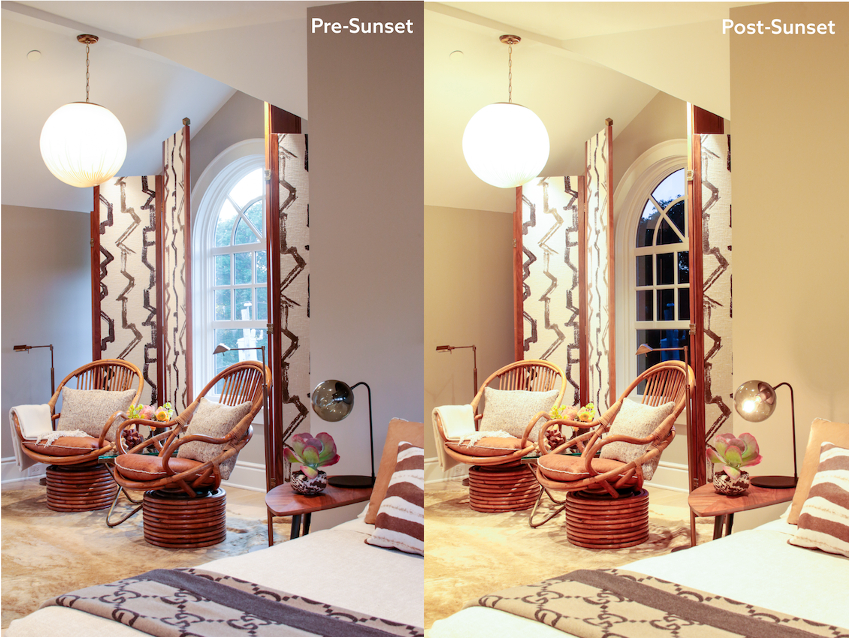Circadian Lighting in the Built Environment
Conclusion
Research and science have shown us that light is the major synchronizer of circadian rhythms to local times on earth. Further, melatonin is identified as a marker of the circadian clock which can be measured and a healthy model developed. Short-wavelength (blue) light maximally affects melatonin profiles and when combined with overall light exposure patterns during waking hours can have profound impacts on our circadian rhythms. However, we also know that light can also be a disruptor if applied at the wrong time. Therefore, a full circadian lighting solution should take into account the light source, intensity, add astronomical time and deploy it in such a way that is easy to install and automated throughout the day. Such solutions are found in advanced, coordinated, and well-designed dynamic lighting systems.

Photo courtesy of Ketra/Magda Biernat
Project: Retail and Office Space
Location: Chicago
Architect: A+I
This retail and office space is a staple of downtown Chicago that utilizes a lighting and controls system that is completely customizable and shifts with an astronomical clock to match the natural sunlight that beams in through the windows during the day. Building occupants are always exposed to light that helps promote their circadian rhythms while they’re in this retail/office space.
End Notes
1Figueiro, M.G.; Steverson, B.; Heerwagen, J.; et al. “The impact of daytime light exposures on sleep and mood in office workers.” Sleep Health. 2017.
2Foster, R.G. “Shedding Light on the Biological Clock.” Neuron. 1998.
3Sharma, S. and Kavuru, M. “Sleep and Metabolism: An Overview.” International Journal of Endocrinology. 2010. Web. 9 July 2017.
4Edwards, L. and Torcellini, P. A Literature Review of the Effects of Natural Light on Building Occupants. National Renewable Energy Laboratory. July 2002. Web. 24 July 2017.
5Boubekri, M.; Cheung, I.N.; Reid, K.J.; Wang, C.; and Zee, P.C. “Impact of Windows and Daylight Exposure on Overall Health and Sleep Quality of Office Workers: A Case-Control Pilot Study.” Journal of Clinical Sleep Medicine. 2014. Web. 14 July 2017.
6Figueiro M.G., Rea M.S., Stevens R.G., Rea A.C. Daylight and Productivity – A Possible Link to Circadian Regulation. Paper presented at EPRI/LRO 5th International Lighting Research Symposium in Palo Alto, California. 2002. Web. 14 December 2017.
7Gooley, J.J.; Chamberlain, K.; Smith, K.A.; et al. “Exposure to room light before bedtime suppresses melatonin onset and shortens melatonin duration in humans.” The Journal of Clinical Endocrinology & Metabolism. 2011.
8Knutson, K.L.; Ryden, A.M.; Mander, B.A.; and Van Cauter, E. “Role of Sleep Duration and Quality in the Risk and Severity of Type 2 Diabetes Mellitus.” Archives of Internal Medicine. 2006.
9Takeda N, Maemura K. Circadian clock and cardiovascular disease. Journal of Cardiology. 2011;57:249-256.
10Chen, L. and Yang, G. “Recent advances in circadian rhythms in cardiovascular system.” Frontiers in Pharmacology. 1 April 2015. Web. 26 July 2017.
11LeGates, T.A.; Fernandez, D.C.; and Hattar, S. “Light as a central modulator of circadian rhythms, sleep and affect.” Nature Reviews Neuroscience. 2014.
12Bower, B.; Bylsma, L.M.; Morris, B.H.; and Rottenberg, J. “Poor reported sleep quality predicts low positive affect in daily life among healthy and mood-disordered persons.” Journal of Sleep Research. 2010.
13Hunter, C.M. and Figueiro, M.G. Measuring Light at Night and Melatonin Levels in Shift Workers: A Review of the Literature. Biological Research for Nursing. 2017.
14Glickman, G.; Levin, R.; and Brainard, G.C. “Ocular Input for Human Melatonin Regulation: Relevance to Breast Cancer.” Neuroendocrinology Letters. 2002.
15Stevens, R.G.; Blask, D.E.; Brainard, G.C.; et al. “Meeting Report: The Role of Environmental Lighting and Circadian Disruption in Cancer and Other Diseases.” Environmental Health Perspectives 2007.
Peter J. Arsenault, FAIA, NCARB, LEED AP, is a practicing architect, green building consultant, continuing education presenter, and prolific author engaged nationwide in advancing building performance through better design. www.linkedin.com/in/pjaarch

|
Ketra offers the most advanced lighting system in the world, delivering high quality light that’s as dynamic as the sun itself. Shifting in color temperature from crisp and bright during the day to soft and warm in the evening, the innovative system was developed to meet the growing need for indoor spaces that promote wellness, productivity, and comfort among occupants. Ketra’s Natural Light gives cues that inform patterns of sleep and daytime activity, encouraging people to live healthier, more productive lives. The system is comprised of LED lighting, controls, software, and patented driver chip technology. www.ketra.com |









